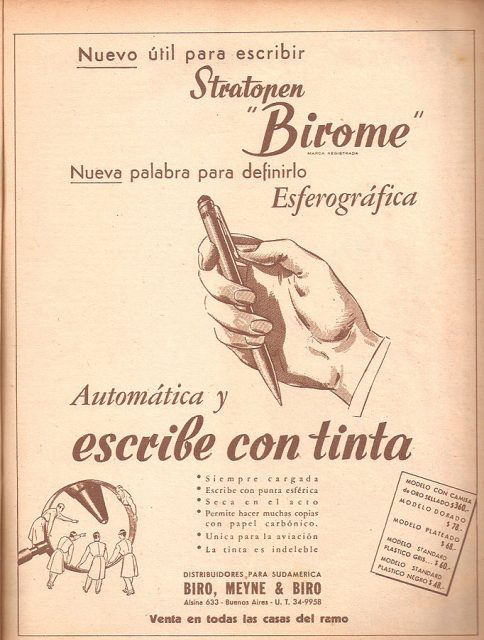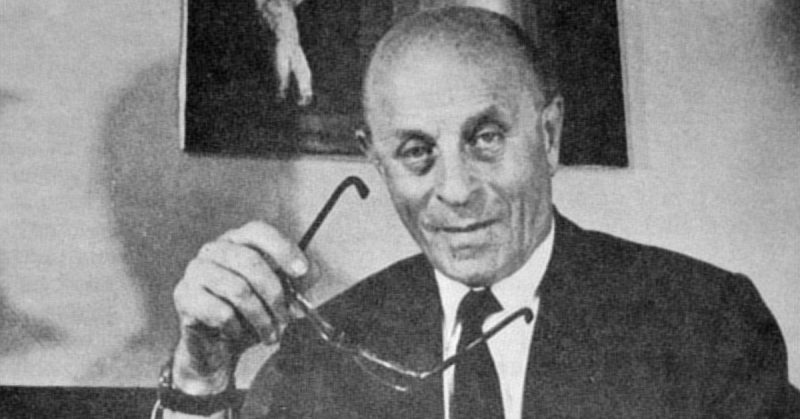Some everyday objects are so present in our day-to-day lives that we might never actually ask the question ― who invented them? Helpful and revolutionary instruments such as the radio, air conditioning or the refrigerator have become so embedded in our daily lives, it seems as if they have been around from the beginning of time.
One such object most certainly is the ballpoint pen. Its less perfect predecessors included various ink-related writing tools which were extremely unreliable due to spillages and other malfunctions.
The search for the instrument that was to become the very essence of today’s written language began in Hungary with a man called László Bíró. He was a failed medical student who wandered around doing several jobs in the 1920s while trying to make a name for himself as an inventor.
In a time when much was still unknown in the scientific world, various charlatans and confidence artists often crossed paths with scholars of all trades.
For a while, Bíró worked as a journalist, where he experimented with using printing ink in a fountain pen, but with no effect. While the printing ink dried quickly, leaving the paper smudge-free, the ink used for the fountain pen was simply not compatible with the viscous, thick printing ink.
At the Budapest International Fair in 1931, young László and his brother, György, who was a chemist, presented what was to be the early prototype of the mechanism we use for writing today.

A tip consisting of a ball that was free to turn in a socket picked up ink from a cartridge and then rolled to deposit it on the paper. It was the revolution of the writing instrument ― clean, reliable, durable and most of all, compact.
Bíró patented the invention in Paris in 1938. Although several others experimented with similar designs, he was the one to make it first. But as is usual with brilliant inventions ― they are not always considered so wonderful at first. In the meantime, WWII was closing in, and László, the inventor, had to think of his Jewish origins as very likely being an issue with the fascist authorities.
In 1943, the brothers decided to leave Europe for good, after several years of avoiding deportation. They headed to Argentina and settled in Buenos Aires. From there they patented their invention in the US.
What was to become the most common writing tool of the century was at first known only by its serial number and general purpose: 2,390,636 Writing Instrument.
The military initially used many new patents during WWII, and the ballpoint pen was no exception. We should thank the Royal Air Force for implementing the invention because, at that time, they were searching for a solution to their regular fountain pens being all but useless in high-altitude conditions.
Bíró’s invention was mass-produced. The brothers formed a company called Biro Pens of Argentina, and the design received a license for production in the United Kingdom to supply the needs of the RAF.

In 1953, Marcel Bich, an aspiring industrialist, settled a deal with László Bíró and bought the Biro patent for 2 million US dollars.
The co-founder of the Bic company sensed that the future of writing lay in Bíró’s patent. He was more than right, for Bich’s company has sold over 100 billion pens since then.
But happened to the original inventor?
László Bíró lived a peaceful life in Buenos Aires, where he was known as a respectable person. So much so, that his name became synonymous for a ballpoint pen in Argentina, where it is called the birome.
As well as Argentina, the Hungarian’s name is used for the pen in countries such as the UK, Ireland, Australia, and Italy, among others.
László Bíró died, aged 86, in 1985, in Buenos Aires, after a long and productive life.
To commemorate the life of this great inventor who indebted humanity with his humble patent, the Argentinian government named Bíró’s birth date, September 29, as National Inventors Day.
